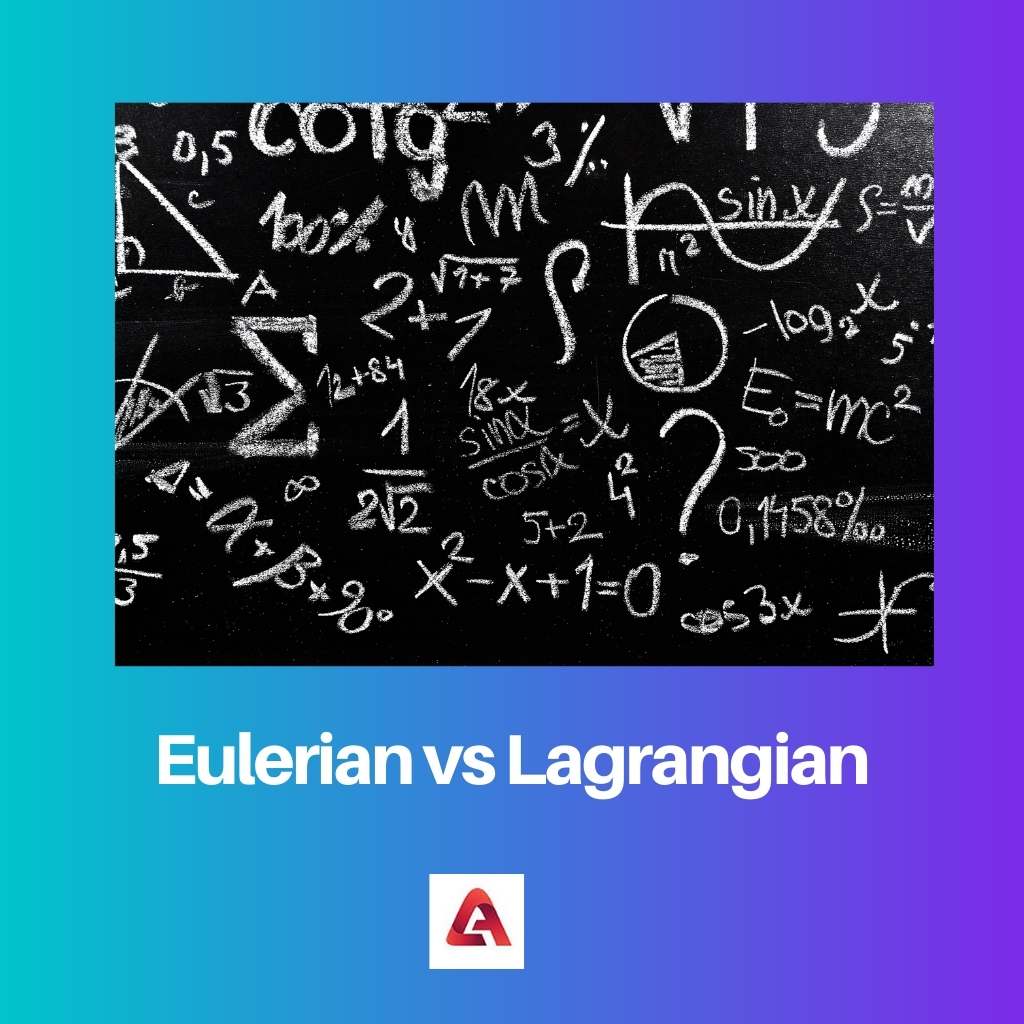The mathematical formulae and rules that are applied to macroparticles may not be applicable while studying the behavior of microparticles. Different mathematical approaches have been designed for solving such problems, and both Eulerian and Lagrangian approaches are used while analyzing and solving such mathematical problems of micro-scale particles.
Key Takeaways
- The Eulerian method studies the fluid flow in a fixed location, while the Lagrangian method studies the fluid flow at a specific point.
- The Eulerian method is used to describe large-scale fluid motions, while the Lagrangian method is used to describe small-scale fluid motions.
- An Eulerian method is suitable for modeling gas dynamics, while the Lagrangian method is suitable for modeling particle transport.
Eulerian vs Lagrangian
The difference between Eulerian and Lagrangian is that in the Eulerian method, more attention is given to the flow properties of a control volume in terms of functions of space and time. In the Lagrangian method, the flow volume is assumed to be made of a large number of particles, and the individual particles are given more focus.

The Eulerian mathematical approach is used to solve mathematical problems involving fluid flow or the flow of a volume of particles. The flow is treated as a function of both space and time and the different properties of the flow, such as temperature, is recorded and studied. In this approach, more focus is given to the actual flow.
The Lagrangian approach considers the fluid flow to be made of a large number of particles. In this approach, fluid flow is studied by studying the individual particles by defining the properties of flow, such as the direction of motion and speed of the particles. Thus the particles are tracked as it moves through the flow volume.
Comparison Table
| Parameters of Comparison | Eulerian | Lagrangian |
|---|---|---|
| Definition | The mathematical approach to study the flow of particles and was proposed by Leonhard Euler | The mathematical approach used to study the flow of particles and was proposed by Louis Lagrange |
| Concentration | Focus is given to the flow properties at a fixed point | Focus is given to an individual particle by defining its properties |
| Approach | The point of observation is fixed and only changes in fluid flow are noted | The point of observation changes as the property values changes at different places |
| Method | The flow is described in function of space and time with different properties | The flow is described in terms of individual particles with characteristic properties |
| Usage | The eulerian approach is used very commonly | The Lagrangian approach is not commonly used |
What is Eulerian?
The mathematical approach to studying the flow of particles suspended in volume that Leonhard Euler proposed is known as the Eulerian approach.
This approach focuses more on the actual flow of the volume than the individual particles. This is achieved by defining the flow in terms of space and time function and establishing the parameters, such as temperature, which are related to the flow.
Thus the concentration of the approach is the flow of the particles. The observation of the flow is made by selecting a point of observation in the flow volume and fixing the point.
The parameters of the flow are recorded through the fixed point of observation, and the change in these parametric values is noted down.
The observations made are extrapolated along the entire flow volume to determine the characteristics of the flow. This approach is thus mostly used to determine the flow characteristics of gaseous flow particles or microparticles suspended in constant flow environments.
This method is more commonly used than the other mathematical formulations for the study of the unsteady dispersion of microparticles. As the flow patterns change constantly, hundreds of iterations are required to create a mathematical model using this method.
What is Lagrangian?
The Lagrangian approach is a mathematical formulation used to study the flow characteristic of a volume. The formulation was made by Louis Lagrange.
The Lagrangian method considers the flow volume to be made of a large number of particles. Thus, the fluid flow characteristics are calculated by understanding the flow parameters of individual particles.
The approach is performed by selecting a single particle in the flow volume and fixing it on the particle. The characteristics of the flow, such as the direction of motion and speed, are assigned to the particle.
The motion of the particle is recorded, and the changes to the parametric quantities are noted down. As the parameters of the flow change in different locations, the observations of the particle are made at different points throughout the flow volume.
Thus different observations are recorded at different points in the flow volume, and the characteristics change in the flow of the particle is calculated. These changes are extrapolated throughout the entire flow volume to determine the nature of the fluid flow.
This method is not as widely used as the Eulerian method due to the difficulty in setting up required for the observation. This method is also more prone to errors as such minute observations are difficult to be physically made.
Main Differences Between Eulerian and Lagrangian
- The Eulerian method is a mathematical formulation made by Leonhard Euler. The Lagrangian method is a mathematical model made by Louis Lagrange.
- In the Eulerian method, more focus is given to the flow of the particles. In the Lagrangian method, more focus is given to the actual particles.
- The point of observation in the Eulerian method is fixed. The point of observation in the Lagrangian method changes with the particle.
- The Eulerian method considers flow as a function of space and time. The Lagrangian method considers volume flow in terms of the characteristics of individual particles.
- The Eulerian mathematical approach is more commonly used to determine fluid flow in a liquid or gaseous environment than the Lagrangian mathematical approach.



